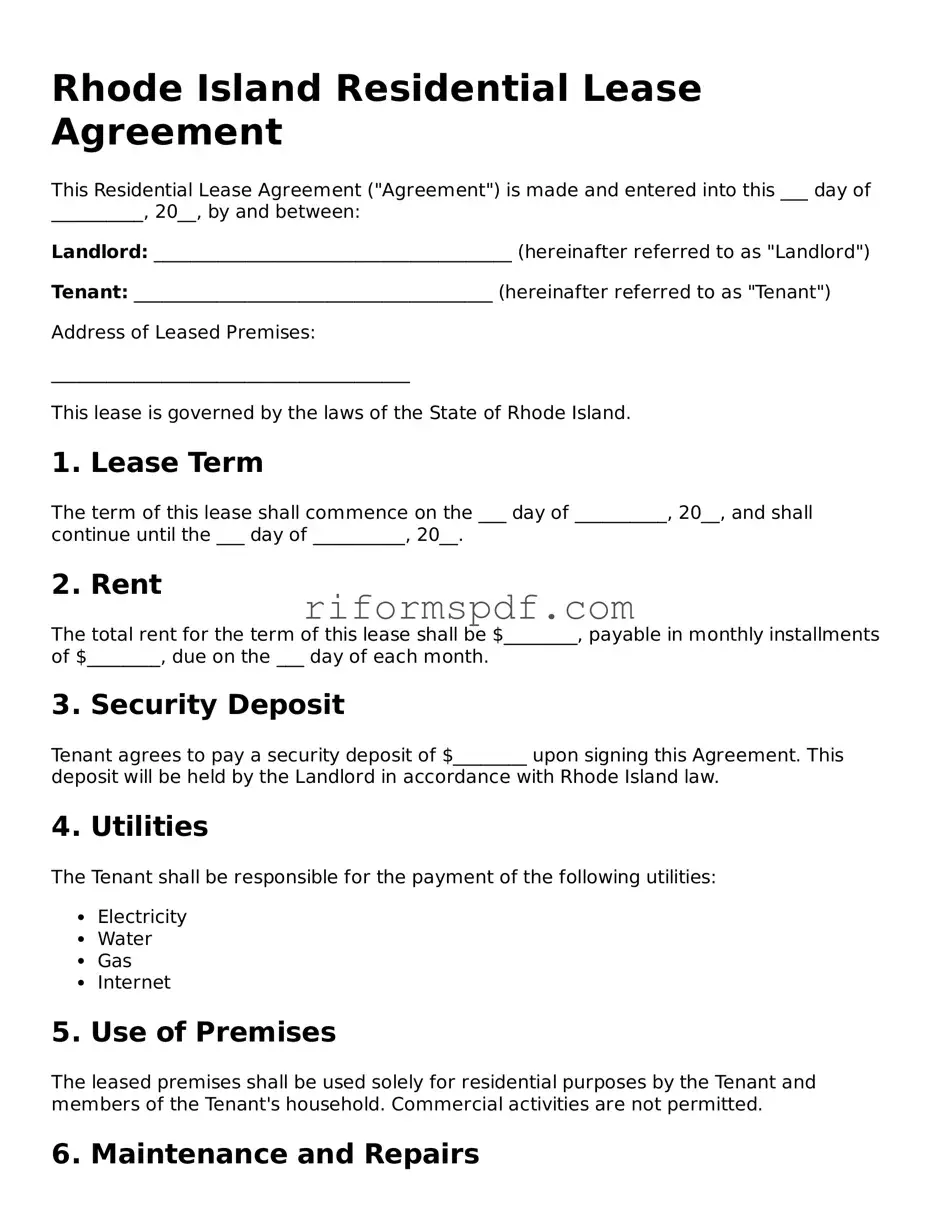In the realm of residential leasing in Rhode Island, a well-crafted lease agreement serves as a crucial foundation for the landlord-tenant relationship. This document outlines essential terms and conditions that govern the rental arrangement, ensuring clarity and mutual understanding between both parties. Key components of the Rhode Island Residential Lease Agreement include the identification of the landlord and tenant, the property address, and the duration of the lease, which typically spans one year but can vary based on specific arrangements. Additionally, the agreement stipulates the rental amount, payment schedule, and security deposit requirements, safeguarding the interests of both the landlord and the tenant. Provisions regarding maintenance responsibilities, rules for subletting, and procedures for lease termination are also integral to the document. By addressing these critical elements, the Rhode Island Residential Lease Agreement not only protects the rights of each party but also fosters a harmonious living environment, reducing the potential for disputes and misunderstandings throughout the lease term.
